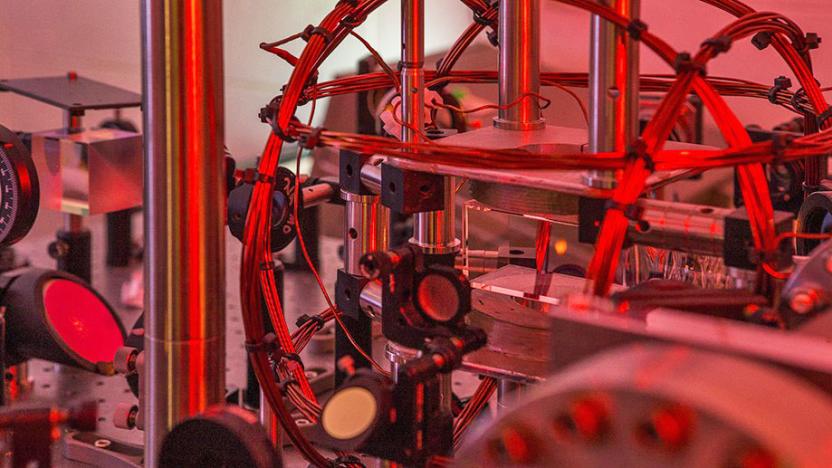AustralianNationalUniversity
Latest

AI can recreate Nobel-Prize winning experiments
We've seen how artificial intelligence has made quantum experimentation easier, and now machine learning is being implemented in other areas of scientific experimentation. A team of researchers from the Australian National University, University of Adelaide and the University of South Wales Australian Defence Force Academy (phew) used an algorithm to recreate a Nobel Prize-winning experiment that created a Bose-Einstein condensate. In simpler terms, the physicists made ultra-cold gas (1 microkelvin, less than "a billionth of a degree above absolute zero"), and then let the AI take over the rest of the experiment.

3D printing resurrects Iron-Age Irish musical instruments
While 3D printing is often used for advancements in medicine or science, such as FDA-approved drugs or rocket pumps, this week it made an academic one. A PhD student at the Australian National University recently used a 3D printer to duplicate an Irish artifact previously known as the "Conical Spearbutt of Navan," thought to be a tool and weapon. Billy Ó Foghlú's replica was able to prove that the ancient spearbutt was, in fact, an ancient mouthpiece -- likely to an iron-age horn.

'Tractor beam' for water can pull boats in any direction
It can be difficult to get waterborne objects to go in the right direction -- just ask any boat captain who has had to fight waves on a choppy sea. However, researchers at the Australian National University have developed a "tractor beam" (really, a wave generator) that would make it trivial for you to float anything to its intended destination. The system creates complex 3D waves that have their own currents, letting you pull a target simply by adjusting the waves' frequencies and sizes. In fact, you can produce any flow you like; scientists in the lab made vortices on demand.

Australian researchers trap tiny particles in tiny tractor beam
Lasers. Is there anything they can't do? The latest addition to the 50-year-old technology's bag of tricks comes courtesy of a team of researchers from the Australian National University, who've managed to create a laser beam that effectively functions as a tiny tractor beam. The key, it seems, is that the laser beam is hollow, which allows tiny particles to be trapped in what the researchers describe as a "dark core," which in turn causes the particles to be pushed along the beam by an effect known as the "photophoretic force." As you might expect, that only works on very tiny particles, but the researchers are able to move them as far as one and a half meters, and they say that the technology could have a number of practical applications, including directing and clustering nano-particles in the air, and even transporting dangerous substances and microbes -- in small amounts, of course. [Thanks, Lester]



